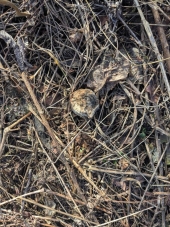

 20
20




Be joyful, though you have considered all the facts. ~Wendell Berry
 4
4




Fish heads fish heads roly poly fish heads
 4
4






 4
4














 11
11




Be joyful, though you have considered all the facts. ~Wendell Berry
 13
13




Kim Goodwin wrote:so you have to as they say "kiss a lot of frogs to get your prince".
“Uncertainty is an uncomfortable position. But certainty is an absurd one.”
― Voltaire










 5
5




Michael Helmersson wrote:
Kim Goodwin wrote:so you have to as they say "kiss a lot of frogs to get your prince".
I've been following this guy for years and in my understanding of his endeavours, he has shown that the idea of complete randomness in apple seeds is a myth. He has successfully cross-pollinated trees with desirable traits and produced trees with a blend of those traits. He deserves a lot more notoriety and praise for his work than he gets. Nice guy, too.
Be joyful, though you have considered all the facts. ~Wendell Berry
 5
5




 2
2





 19
19




 3
3




Kelly Craig wrote: EVERY apple tree... has been grafted to a rootstock tolerant of our climate.
 5
5




Nothing ruins a neighborhood like paved roads and water lines.
 2
2




Joseph Lofthouse wrote:...
It might take 5 years or more for an apple seedling to bear fruit, ...
"Also, just as you want men to do to you, do the same way to them" (Luke 6:31)






 3
3




"Also, just as you want men to do to you, do the same way to them" (Luke 6:31)
 4
4




 4
4




A build too cool to miss:Mike's GreenhouseA great example:Joseph's Garden
All the soil info you'll ever need:
Redhawk's excellent soil-building series






|
I am displeased. You are no longer allowed to read this tiny ad:
The new purple deck of permaculture playing cards
https://www.kickstarter.com/projects/paulwheaton/garden-cards
|









